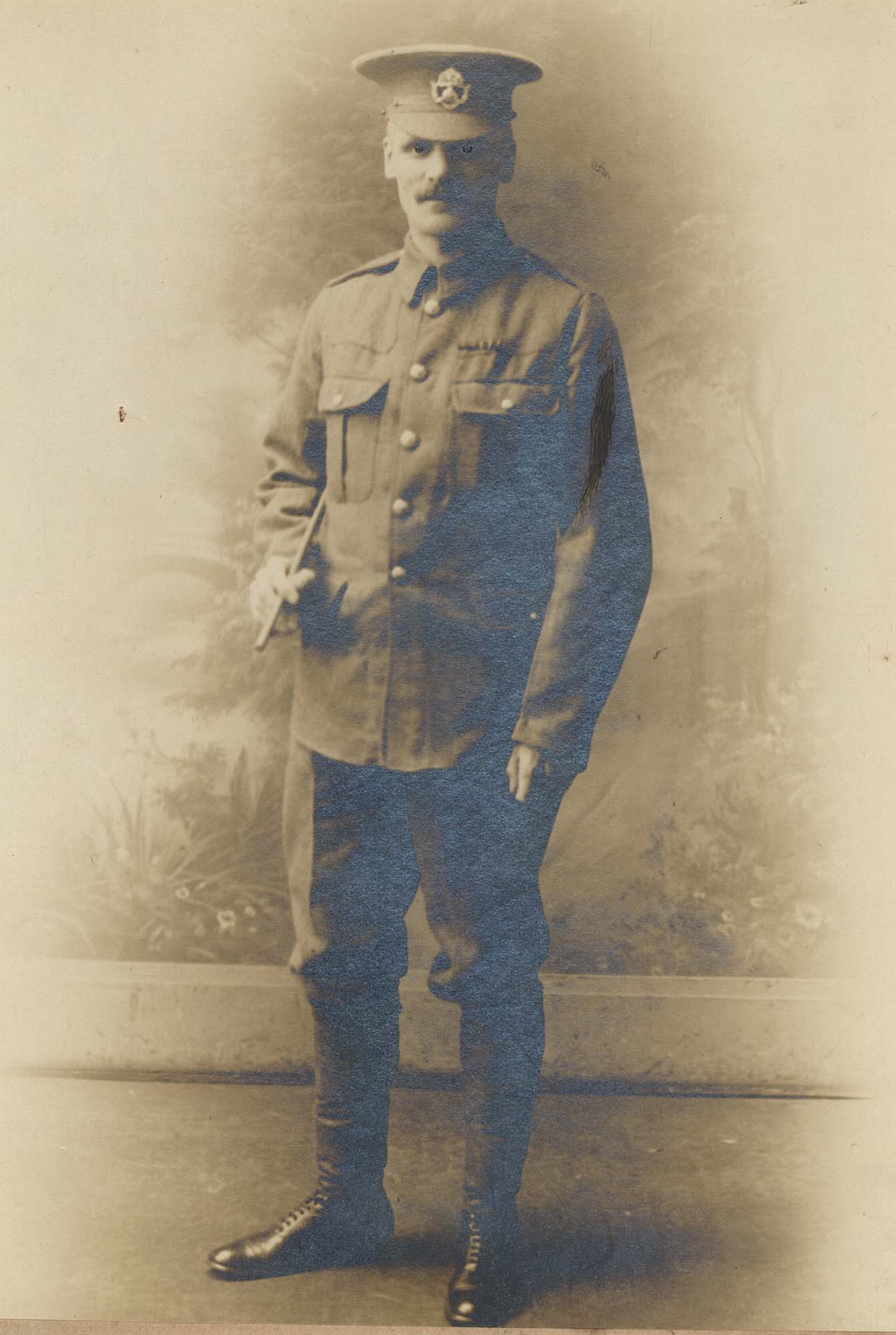Sjt
David George Hackett
Informatie over geboorte
|
Geboortedatum: 21/04/1879 |
|
Geboorteplaats: Plumstead, Kent, Engeland, Verenigd Koninkrijk |
Algemene Informatie
|
Beroep: Politieagent |
Informatie legerdienst
|
Land: Engeland, Verenigd Koninkrijk |
|
Strijdmacht: British Expeditionary Force |
|
Rang: Serjeant |
|
Service nummer: G/15008 |
|
Dienstneming plaats: City of Westminster, Middlesex, Engeland, Verenigd Koninkrijk |
|
Eenheden: — Royal Fusiliers (City of London) Regiment, 11th Bn. (Laatst gekende eenheid) |
Informatie over overlijden
|
Datum van overlijden: 10/08/1917 |
|
Plaats van overlijden: Glencorse Wood, Zonnebeke, België |
|
Doodsoorzaak: Killed in action (K.I.A.) |
|
Leeftijd: 38 |
Begraafplaats
|
Hooge Crater Cemetery Plot: IX Rij: C Graf: 16 |
Onderscheidingen en medailles 4
|
1914-15 Star Medaille — 12/12/1919 |
|
British War Medal Medaille — 25/09/1920 |
|
Queen's South Africa Medal Medaille |
|
Victory Medal Medaille — 25/09/1920 |
Points of interest 3
| #1 | Geboorteplaats | ||
| #2 | Dienstneming plaats | ||
| #3 | Plaats van overlijden (bij benadering) |
Mijn verhaal
David George Hackett was born in April 1879 in Plumstead, Kent. He became a professional soldier and served in India and during the Boer War. After his military service, David joined the metropolitan police. He married Frances Edith Maltby in 1904. They had a son, who died in 1906 and a daughter, named Winifred Joyce. When the war broke out David reenlisted. He initially served in East Africa, with the Royal Fusiliers (City of London) Regiment, 25th Battalion, a Battalion formed by the Legion of Frontiersmen, a nationalist paramilitary group.
In 1917 David was shipped back to Europe. And by the time of the Battle of Passchendaele he was posted to the 11th Battalion Royal Fusiliers, part of the 54th Brigade, of the 18th (Eastern) Division. On the 10th of August 1917 David’s Battalion took part in the Capture of Westhoek, advancing on Glencorse Wood. During the early hours of the day the Battalion occupied positions near Jargon Support, just north of Fitzclarence Farm.
The attack started at 4.35 a.m. The objective in Glencorse Wood was reached on time, but the men came under destructive frontal machine-gun fire and the Battalion suffered heavy casualties. The 7th Queen’s who were to form a defensive flank along the edge of Inverness Copse was stopped by heavy machine-gun fire and wasn’t able to reach its objective. The 11th Royal Fusiliers remained at the position until 6 a.m., when the Germans launched a counter-attack from Inverness Copse. The attack rolled up the right flank of the Battalion and the men fell back to a nearby crestline. This line was held until the Battalion was relieved by the 8th Norfolk Regiment.
The 11th Battalion Royal Fusiliers had failed to hold its objective, as the Germans were in possession of the right flank. Making it possible to manoeuvre on the Royal Fusiliers’ flank and rear. David’s Battalion suffered heavy casualties during the fighting in Glencorse Wood. It went into battle with 37 officers and 891 other ranks and came out of action with 20 officers and 563 other ranks. 17 officers and 328 men were either killed, wounded or missing.
Serjeant David George Hackett was killed on the 10th of August 1917. The thirty-eight-year-old veteran
was initially buried in the field in Glencorse Wood. His remains were interred in Hooge Crater Cemetery after the War.
In 1917 David was shipped back to Europe. And by the time of the Battle of Passchendaele he was posted to the 11th Battalion Royal Fusiliers, part of the 54th Brigade, of the 18th (Eastern) Division. On the 10th of August 1917 David’s Battalion took part in the Capture of Westhoek, advancing on Glencorse Wood. During the early hours of the day the Battalion occupied positions near Jargon Support, just north of Fitzclarence Farm.
The attack started at 4.35 a.m. The objective in Glencorse Wood was reached on time, but the men came under destructive frontal machine-gun fire and the Battalion suffered heavy casualties. The 7th Queen’s who were to form a defensive flank along the edge of Inverness Copse was stopped by heavy machine-gun fire and wasn’t able to reach its objective. The 11th Royal Fusiliers remained at the position until 6 a.m., when the Germans launched a counter-attack from Inverness Copse. The attack rolled up the right flank of the Battalion and the men fell back to a nearby crestline. This line was held until the Battalion was relieved by the 8th Norfolk Regiment.
The 11th Battalion Royal Fusiliers had failed to hold its objective, as the Germans were in possession of the right flank. Making it possible to manoeuvre on the Royal Fusiliers’ flank and rear. David’s Battalion suffered heavy casualties during the fighting in Glencorse Wood. It went into battle with 37 officers and 891 other ranks and came out of action with 20 officers and 563 other ranks. 17 officers and 328 men were either killed, wounded or missing.
Serjeant David George Hackett was killed on the 10th of August 1917. The thirty-eight-year-old veteran
was initially buried in the field in Glencorse Wood. His remains were interred in Hooge Crater Cemetery after the War.
Bronnen 5
|
"Passchendaele. The Day-by-Day Account", McCarthy C., London, Uniform, 2018, pg. 44-46. Gebruikte bronnen |
|
Ancestry https://www.ancestry.com/ Verdere verwijzing |
|
CWGC https://www.cwgc.org/find-war-dead/casualty/458173/hackett,-david-george/ Gebruikte bronnen |
|
The Long, Long Trail https://www.longlongtrail.co.uk/army/ Gebruikte bronnen |
|
War Diary Royal Fusiliers (City of London) Regiment, 11th Bn. http://www.nmarchive.com/ Verdere verwijzing |
